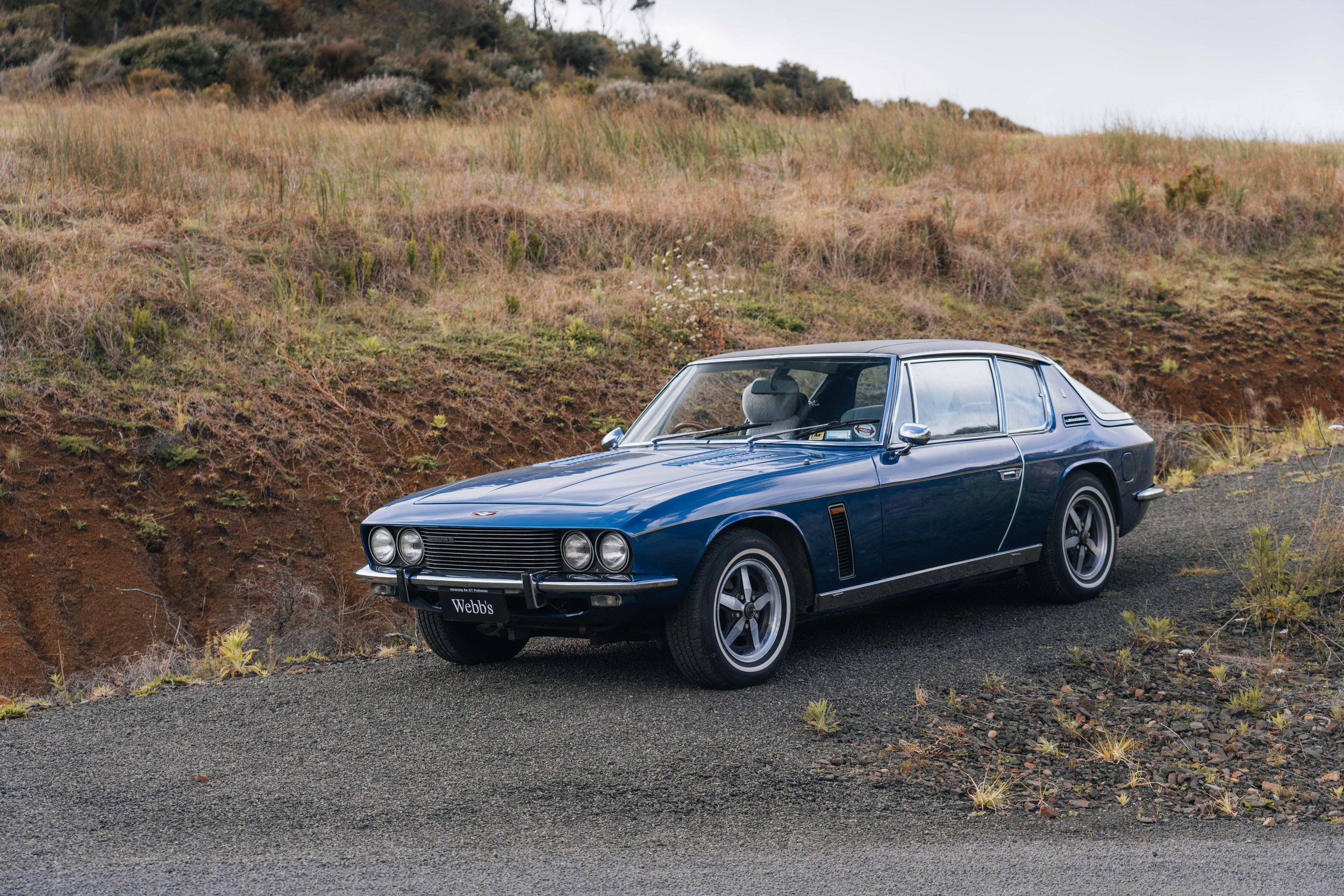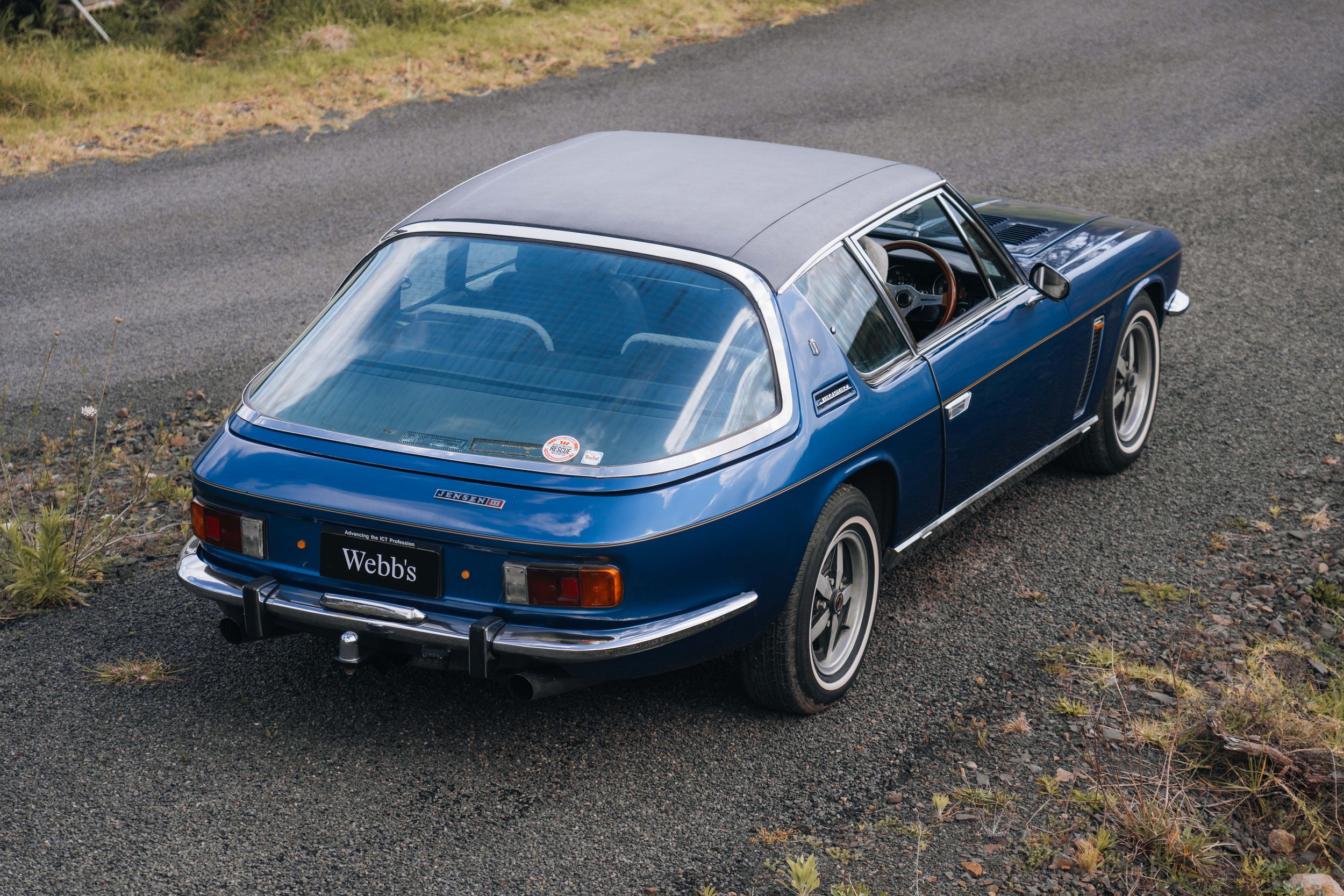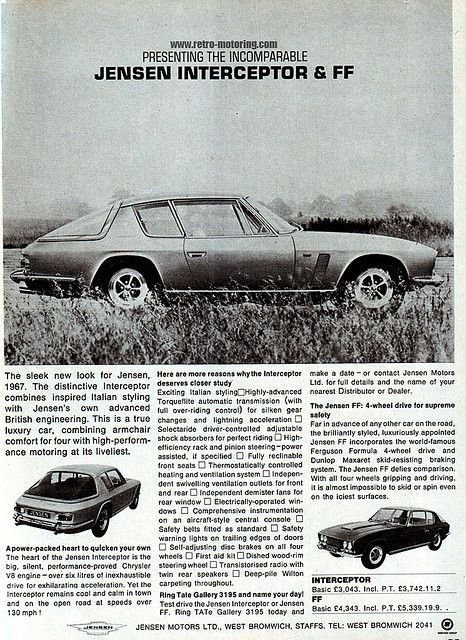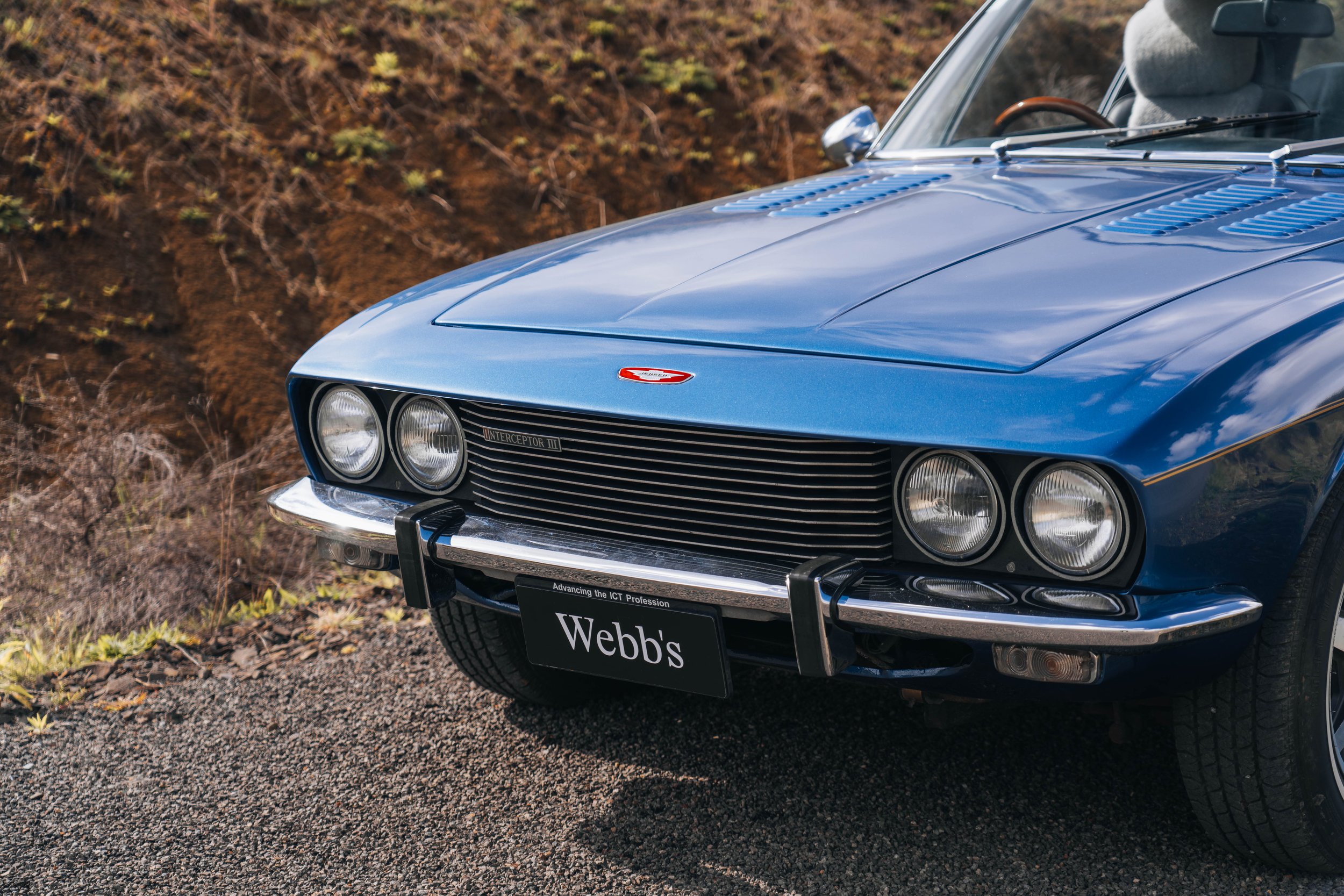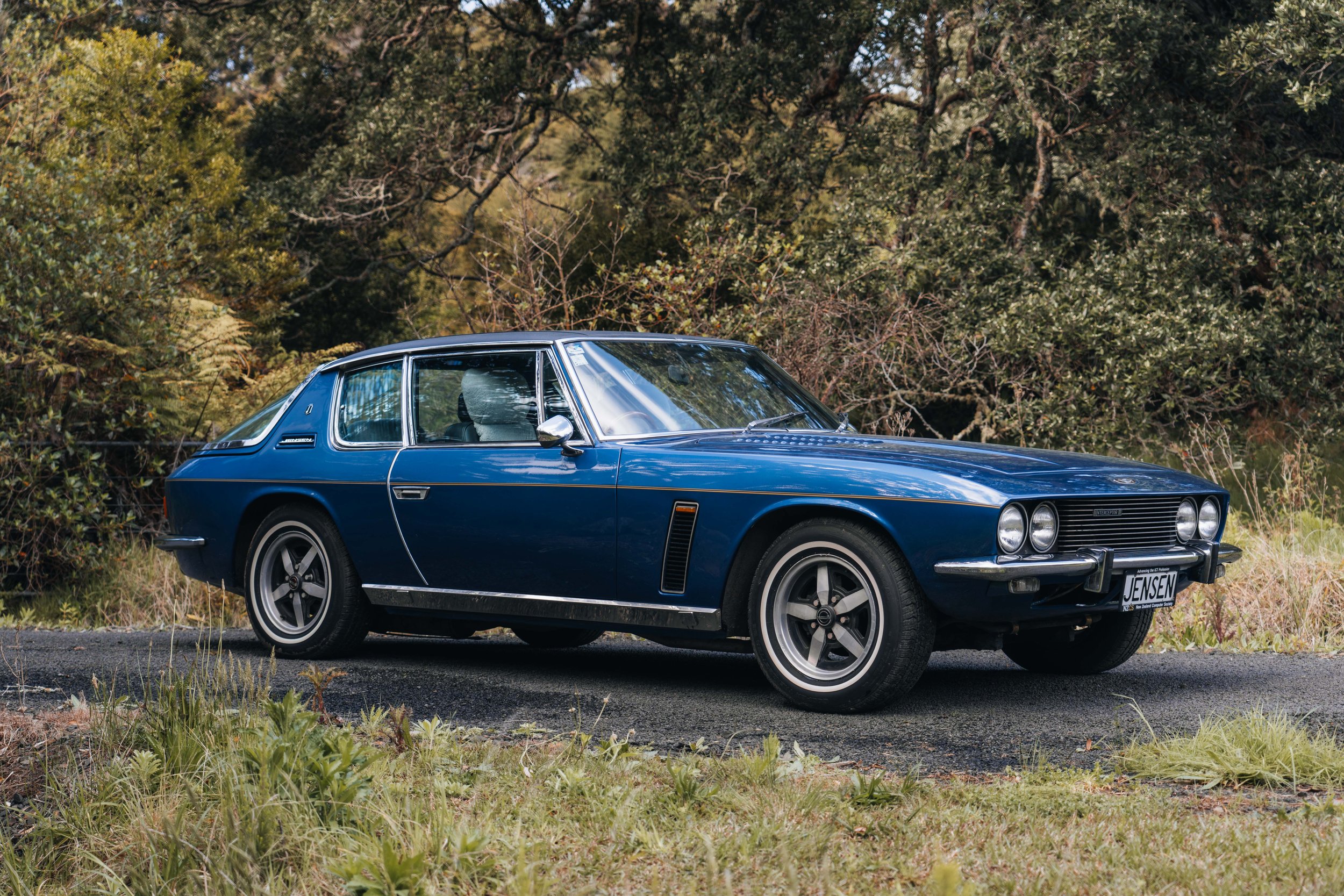The Jensen Interceptor
The Interceptor on display at the 1966 Earls Court Motor Show
Jensen debuted the Interceptor in 1950 and its following iterations cemented the marque’s reputation as one of Britain’s most well-known, with its remaining specimens highly sought after both by restorers and collectors alike.
The Interceptor began as a modest, twodoor, four-seat saloon hand-built from glass reinforced plastic and Austin components in a garage in West Bromwich, England. It went on to become the head-turning Interceptor Mark I, introduced at the Earls Court Motor Show on October of 1966. The Mark I unveiled Jensen’s highly successful formula: Marrying Italian flair with American muscle all suited up in British good manners. It was designed by Milan’s Carrozzeria Touring Superleggera and built — as a steel body this time — by Vignale at their factory. This car also left behind the original Interceptor’s reliance on Austin, opting instead for a 330 bhp Chrysler 383ci (6276cc) V8 engine and Torqueflite 3 speed automatic gearbox.
The Mark II — which brought production back to West Bromwich — was an evolution in performance and, most noticeably, design. Its front grille, headlamps, bumper and rear lights were revised. The interior introduced a glovebox and centre console and air-conditioning became available as an optional add-on. It was the introduction of the Mark III in 1971, however, that made Jensen into a worthy competitor against the likes of Jaguar and Aston Martin. It had a classic sophistication with a suitably glamorous persona to welcome the roaring 70s.
“The Gentlemen’s Express,” is what the British media called this, the most successful of Interceptors, and given the Mark III’s performance and design, it is not hard to see why. The 383ci engine was changed for a lowcompression 440ci (7212cc) version, also from Chrysler, and was the most powerful engine Jensen had specified up to that point. The Mark III’s imposing presence, power and distinctive shape included the wrap-around glass rear hatch, a long bonnet, a single diagonal air vent on the front wings, while cast aluminium surrounds made dual headlamps with tapered light apertures. The 6-inch-wide styled steel wheels were replaced by 7-inch-wide cast alloy ones and ventilated discs replaced the solid disc brakes and both the air conditioning and engine cooling were improved.
Given the early 70s fascination with space exploration, it is not surprising that the Interceptor Mark III’s design — and even its name — had a distinctly futuristic, space age vocabulary of rounded glazing, pronounced curvature and dramatic tapers. These, however, were not the only stars associated with the car and everyone from Princess Anne and Frank Sinatra, through to Mick Fleetwood and Cher have boasted ownership at one point or another. The Interceptor was a resounding, although short lived success, with some critics calling the Mark III as: damn near perfect when judged against its contemporaries. In 1976, when production ceased 26 years after its introduction, approximately 4,200 Mark III’s of all types had been built. Its reputation however, has survived through a strong, global fans base that ensures the Jensen’s peculiar legacy of muscle and elegance.
Lot 66, 1974 Jensen Interceptor Mk III
View all articles & videos here



